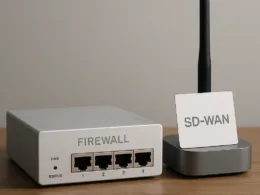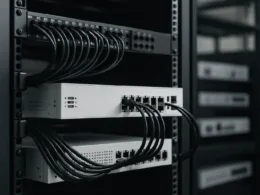Choosing an MQTT broker is one of the small design choices that most often causes big operational problems. The MQTT broker is the server that receives publish messages from devices and routes them to interested subscribers: it is the traffic manager and policy point for your IoT fleet. Pick one that matches your real workload and operational constraints, not the one with the nicest dashboard.
Start with the requirements you can measure
Be concrete about three things before you evaluate brokers: connection scale, message patterns, and failure model. Connection scale is not only the total number of devices, it is the connection ramp-up: how many clients will reconnect or come online at once (for example after a power outage). Message patterns are whether you use many low-rate sensors, fewer devices with large retained messages, or lots of telemetry at high frequency. Failure model means expected network instability, device reboots and how long a session must survive.
Define those numerically (expected concurrent connections, average publish rate per device, acceptable message loss, and required retained session behaviour). With numbers you can match broker features to needs instead of guessing.
Security and access control
treat the broker as a gate
Security is more than TLS. A broker must support authentication (client certs, tokens, username/password), and fine-grained authorisation so you can limit which topics a client may publish or subscribe to. Access control models vary between brokers: some use ACL files, others offer role-based access control or grouping of clients and topics to simplify permissions at scale.
Design points to check:
- What authentication methods are supported (mutual TLS, OAuth2/token, basic)?
- Can you manage authorisation centrally (RBAC, groups) or do you need per-client ACLs?
- How are credentials and ACLs stored and migrated between environments?
If you expect thousands or more devices, avoid a broker that forces manual per-client ACL edits. Managed approaches that group clients or expose RBAC help at scale and reduce human error.
Scalability and performance
clusters, sharding and ramp-up
Scalability is multi-dimensional: concurrent connections, message throughput, subscription fan-out and latency under load. Some brokers are written to scale horizontally with mature clustering, others are single-node with very low latency for small fleets.
Key operational checks:
- Does the broker support clustering and what is the failure mode for a cluster split?
- How does it handle state that must be persisted (sessions, retained messages) and which backing stores are supported? Cloud architecture guidance commonly recommends running brokers in clustered form so nodes can be scaled and recovered without losing session state.
- Can the broker cope with connection ramp-up events? A design that looks fine for steady state can collapse when thousands of devices reconnect simultaneously.
Test with a ramp-up profile that matches your worst case. Benchmarks published for brokers vary widely; treat vendor numbers cautiously and reproduce tests against something close to your expected workload.
Broker type, client constraints and topic design
There are native MQTT brokers and adapted brokers (for example message brokers that add MQTT via a plugin). Native brokers tend to have better protocol-level performance and more complete MQTT feature support. If client hardware is constrained, topic and payload design matter as much as broker choice. Poor topic hierarchies, excessive wildcards or very high subscription fan-out increase broker CPU and memory pressure.
Keep these practical rules in mind:
- Design topics to limit unnecessary fan-out; avoid broadcasting to broad wildcards where unnecessary.
- Prefer lightweight payloads and consider binary encodings if you have tight bandwidth constraints.
- If using an adapted broker, confirm it implements the MQTT features you need (session persistence, MQTT 5 properties, topic filters) and review its performance under your traffic profile.
Migration, operation and a short checklist
Migration is often harder than initial deployment: ACLs, authentication backends, session stores and topic mappings must be transferred and validated. Consider these operational factors when choosing a broker:
- Operational model: self-hosted or managed service? If self-hosted, how mature is the operator tooling (monitoring, metrics, automated scaling)?
- Data persistence: where are persistent sessions and retained messages stored and how do you back them up and migrate them?
- Tooling and observability: metrics for connections, throughput, dropped messages and CPU/memory per node.
- Support and ecosystem: availability of auth plugins, connectors to your downstream systems and documented migration steps.
Quick checklist:
- Measure worst-case connection ramp-up and run a reproduction test
- Confirm supported authentication and authorisation fits your lifecycle
- Verify clustering behaviour and session persistence backing store
- Review topic design and expected subscription fan-out
- Check migration paths for ACLs, session data, and credentials
“Before starting, assume that failures will happen – devices will reboot, networks will drop, and brokers may become temporarily unreachable.”
Match broker capability to measured needs: secure, predictable authorisation for large fleets; clustering and session persistence for availability; and native protocol support if you need low-level MQTT features. Do real tests with your connection and message profile, prioritise manageable access control schemes, and plan the migration of credentials and sessions. These pragmatic checks remove the guesswork and keep your IoT project running reliably.







